SAR Target Classification Based on full convolution network
1. MSTAR dataset expansion
- In the original SAR image (128) × 128) random clipping 88 × 88 slices, each slice can contain the target area, and the number of samples can reach (128-88 + 1) after random sampling × (128-88 + 1) = 1681 times, each SAR image of each category samples 10 slices, so as to improve the number of training samples.
2. Full convolution network model (AConvNets)
- The network is completely realized by the convolution layer, the full connection layer is removed, the convolution output of the last layer directly outputs the probability of each category by Softmax, and the loss function is still the loss of classification cross entropy. The specific network model is as follows:
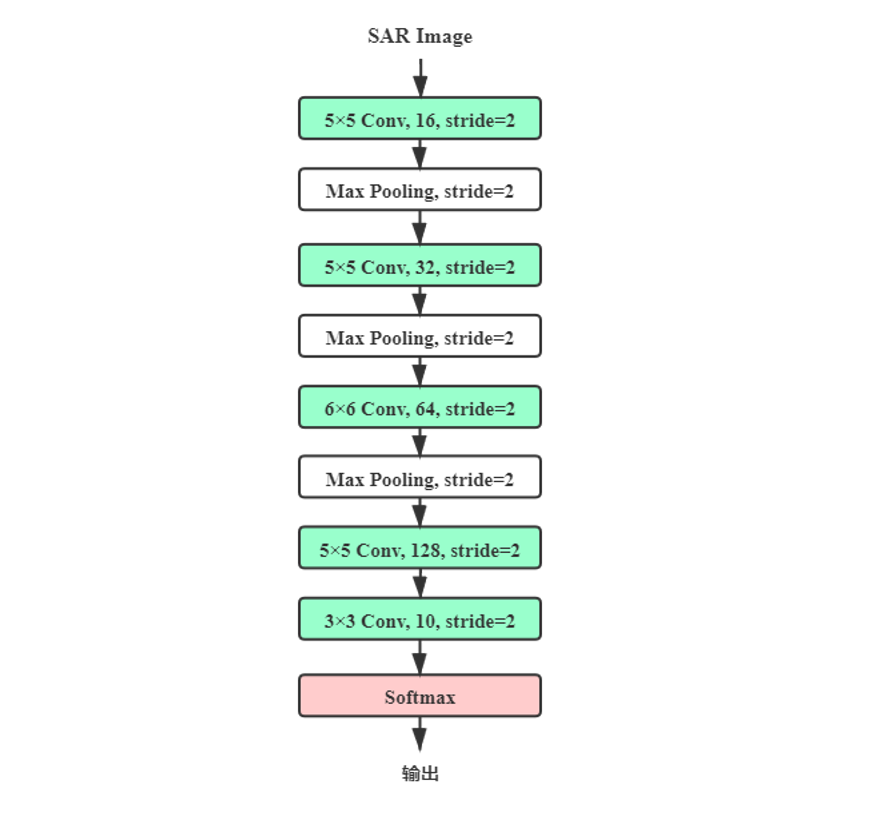
- Among them, the convolution layer uses the BN layer to prevent over fitting and accelerate training. The input training set dimension: [b, 88, 88, 1] - > output: [b, 1, 1, 10]. The classification cross entropy loss is still used for training. The optimizer Adam has a learning rate of 0.0001.
3. Classification results under SOC conditions
-
The training set and test set are as follows:
category quantity Training set 17 ° Test set 15 ° 2S1 299 274 BMP2 233 196 BRDM2 298 274 BTR60 256 195 BTR70 233 196 D7 299 274 T62 299 273 T72 232 196 ZIL131 299 274 ZSU23/4 299 274 total 2747 2426 -
Each SAR image in the training set is cropped with 5 random slices and 1 slice in the center, all of which are 88 × 88 pixels, a total of 2747 training sets × 6 = 16482 (sheets). Test set center clipping 88 × 88 slices.
-
Training: epoch = 50, Adam optimizer, learning_rate = 0.0001, the Accuracy and Loss curves of training set and test set are displayed in the tensorboard:
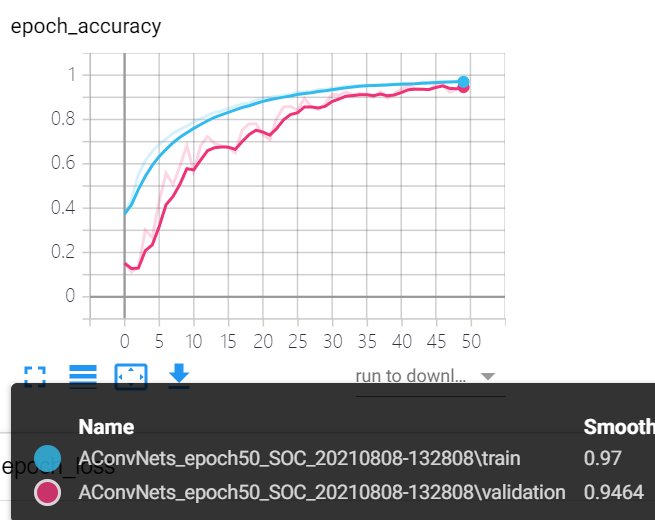
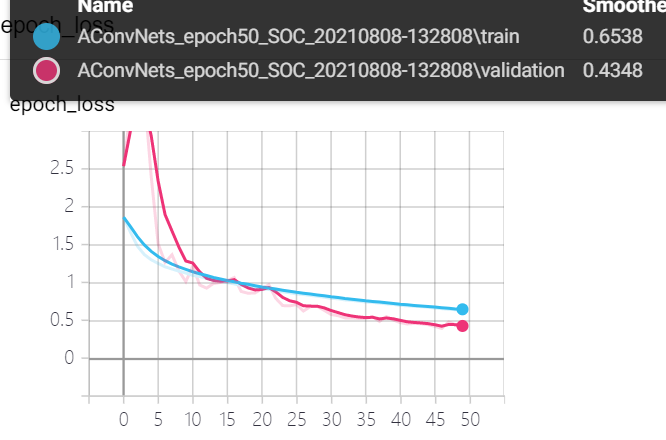
-
Calculate the confusion matrix of the test set as follows:
2S1 BMP2 BRDM B60 B70 D7 T62 T72 ZIL ZSU 2S1[[263 0 0 0 0 0 11 0 0 0] 95.99% BMP2[ 0 132 0 18 3 0 0 42 0 1] 67.35% BRDM[ 0 0 272 0 0 0 0 0 0 2] 99.27% B60 [ 0 0 0 192 0 0 0 0 1 2] 98.46% B70 [ 0 0 0 13 181 0 0 2 0 0] 92.35% D7 [ 2 0 0 0 0 272 0 0 0 0] 99.27% T62 [ 0 0 0 0 0 0 273 0 0 0] 100% T72 [ 0 0 0 1 0 0 0 195 0 0] 99.49% ZIL [ 0 0 0 0 0 4 0 0 270 0] 98.54% ZSU [ 0 0 0 0 0 0 0 0 0 274]] 100% Total: 95.07% The Precision is : 0.9574354589252246 The Recall is : 0.9507109053615832 The Accuracy is : 0.9579554822753503 The F1 is : 0.9493873742571258 The F_beta is : 0.949223632328047 The Auc Score is : 0.9996171502953114
4. Classification results under eoc1
-
EOC1 is the training set and test set under the condition of large elevation change, as follows:
category quantity quantity Training set 17 ° Test set 30 ° 2S1 299 288 BRDM2 298 287 T72 299 288 ZSU234 299 288 total 1195 1151 -
Each SAR image in the training set is cropped with 5 random slices and 1 slice in the center, all of which are 88 × 88 pixels, 1195 training sets in total × 6 = 7170 (sheets). Test set center clipping 88 × 88 slices.
-
Training: epoch200, Adam optimizer, learning_rate = 0.0001, the Accuracy and Loss curves of training set and test set are displayed in the tensorboard:
[external chain picture transfer failed. The source station may have anti-theft chain mechanism. It is recommended to save the picture and upload it directly (img)-
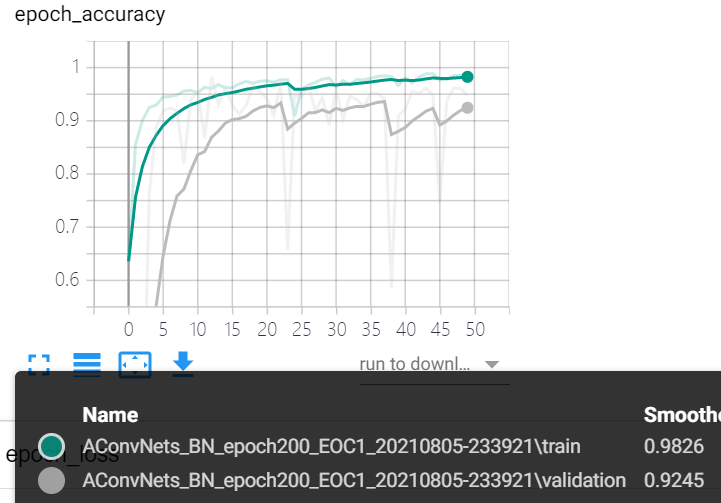
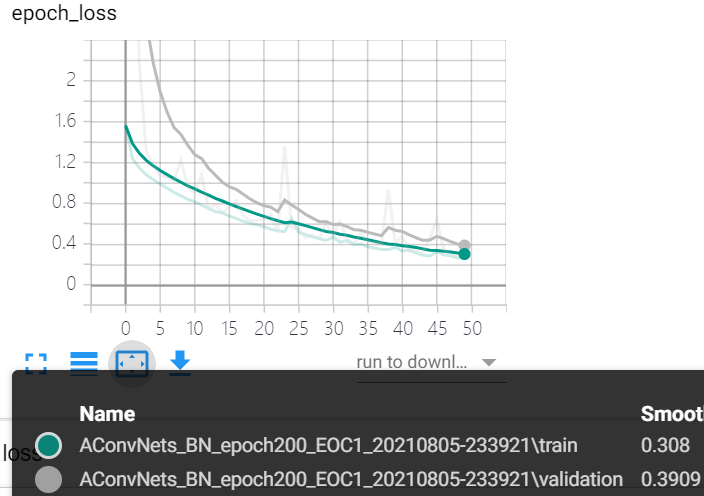
-
Calculate the confusion matrix of the test set as follows:
2S1 BRDM T72 ZSU 2S1 288 0 0 0 100% BRDM 0 287 0 0 100% T72 0 0 287 1 99.65% ZSU 59 0 0 229 79.51% Total: 94.79% The CNN Precision is : 0.9564058388673098 The CNN Recall is : 0.9479166666666666 The CNN Accuracy is : 0.947871416159861 The CNN F1 is : 0.9473793419770824 The CNN F_beta is : 0.9465925313694183
5. Classification results under eoc2 conditions
-
EOC2 is the change of vehicle appearance configuration, and its training set is as follows:
category Quantity (pitch angle 17 °) BMP2(9563) 233 BRDM2 298 BTR70(C71) 233 T72(132) 232 total 995 -
Test set:
category model Quantity (pitch angle 17 ° & 15 °) T72 S7 419 T72 A32 572 T72 A62 573 T72 A63 573 T72 A64 573 total 2710 -
Each SAR image in the training set is cropped with 10 random slices and 1 slice in the center, all of which are 88 × 88 pixels, 995 training sets in total × 11 = 10945 (sheets). Test set center clipping 88 × 88 slices.
-
Training: epoch50, Adam optimizer, learning_rate = 0.0001, the Accuracy and Loss curves of training set and test set are displayed in the tensorboard:
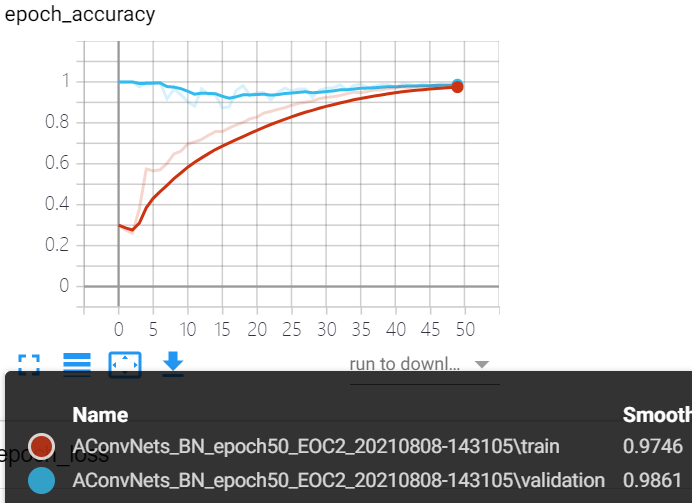
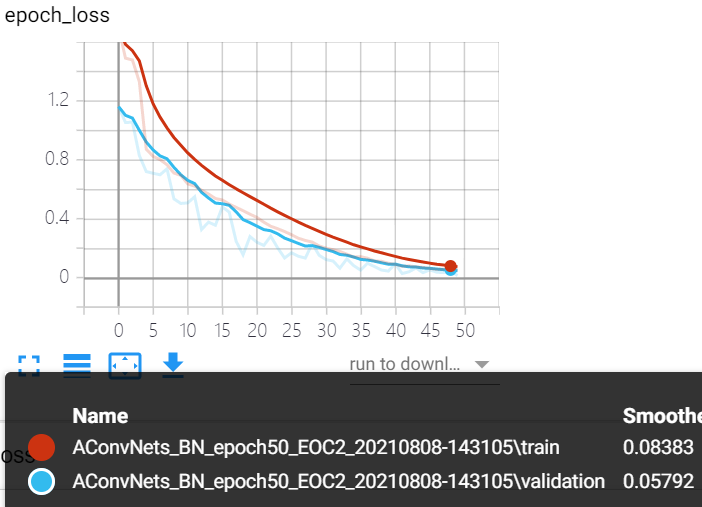
-
Calculate the confusion matrix of the test set as follows:
BMP2 BRDM2 BTR70 T72 S7 8 0 0 411 98.09% A32 0 0 0 572 100% A62 1 0 0 572 99.83% A63 1 0 0 572 99.83% A64 4 0 0 569 96.14% Total: 98.78%
6. Classification results under eoc3
-
EOC3 is for different models and variants of the same target. The training set is consistent with EOC2 training set. The test set is as follows:
category model Quantity (pitch angle 17 ° & 15 °) BMP2 9566 428 BMP2 C21 429 T72 812 426 T72 A04 573 T72 A05 573 T72 A07 573 T72 A10 567 total 3569 -
Here, the EOC2 trained model is directly used for prediction. The confusion matrix of the test set is as follows:
BMP2 BRDM2 BTR70 T72 BMP9566 359 0 17 52 83.88% BMPC21 372 0 1 2 86.71% T72_812 2 0 1 423 99.30% T72_A04 3 0 0 570 99.48% T72_A05 1 0 0 572 99.83% T72_A07 0 0 0 573 100% T72_A10 20 0 0 547 96.47% Total: 95.74%